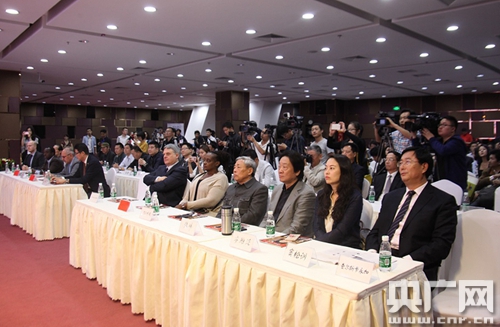Many Countries In The South China Sea Conduct Military Exercises, And Chinese Warships Decisively Attack The Western Ocean To See The US Backyard
Many Countries In The South China Sea Conduct Military Exercises, And Chinese Warships Decisively Attack The Western Ocean To See The US Backyard
The South China Sea is in trouble: Multi-national military exercises and China's strategic countermeasures. In the summer of 2025, the situation in the South China Sea heated up again due to joint military exercises of multiple countries. The United States unites seven countries including Japan, Australia, Canada, France, India and the Philippines
1. Joint performance of the Seven Nations: The "powder barrel" of the situation in the South China Sea
The scale of this seven-nation military exercise is unprecedented, and the course covers practical content such as joint intelligence sharing, air-sea integrated strike, and anti-submarine warfare. The USS Reagan aircraft carrier formation led by the Australian amphibious assault ship Canberra, the French nuclear-powered aircraft carrier, and the Japanese Izumo helicopter carrier collectively appeared, forming military pressure on China. The Philippines formed a joint detachment with the Indian Navy for the first time to simulate joint operations, trying to break the status quo of the South China Sea by introducing external forces.
India's role transformation is particularly eye-catching. The New Delhi Ministry of Defense stated that "the security of the South China Sea channel is related to India's core interests" and sent its main ships into the South China Sea three times to carry out joint cruises with the US, Philippines and Australia ships. Analysts believe that India's move aims to enhance the Indo-Pacific discourse power and disperse China's defense focus on land borders. The Philippines adopted a radical strategy. On July 27, the coast guard ship tried to break through China's control of Ren'ai Reef, but was driven away by the Chinese coast guard within 360 seconds. This move was called "the shortest confrontation in Southeast Asia" by foreign media.

2. China's countermeasures: "combination punch" from the South China Sea to the Western Pacific
Faced with the high pressure of the seven countries, China has carried out multi-dimensional countermeasures with the "denial strategy" as the core, forming a three-dimensional pattern of "frontier deployment in the South China Sea strategic restraint in the Western Pacific breakthrough in the Latin American pattern".
1. The Frontier of the South China Sea: "Double Insurance" between H-6K and Coast Guard Ship
China deployed a H-6K bomber formation in the South China Sea and entered the Yongxing Island Airport in the Xisha Island. The island has a 3,000-meter runway, reinforced hangar, missile positions and a new generation radar system, becoming a "maritime fortress" in the South China Sea. The US P-8A anti-submarine aircraft, the Australian "weed tail" early warning aircraft and other close-range reconnaissances were accurately intercepted by the PLA military aircraft around Yongxing Island. At the same time, China's coast guard ships regularly patrol the waters of Huangyan Island and consolidate their actual control through high-frequency law enforcement actions.
2. Western Pacific: Dual aircraft carrier formation breaks through the "first island chain"
From late May to June 2025, the Liaoning fleet brought 16 ships (including 2 comprehensive supply ships) into the Western Pacific for a long-term and large-range voyage. The formation includes 1 aircraft carrier, 3 Type 055 destroyers, 5 Type 052D destroyers, and 3 Type 054A frigates, forming systematic combat capabilities. In June, the Shandong fleet also appeared in the Western Pacific, forming a "dual aircraft carrier linkage" with the Liaoning ship, simulating long-range strikes and systematic operations, and directly challenging the US military's "first island chain" blockade. Pentagon analysts acknowledge that the U.S. military's military's military advantage in the first island chain has been offset by China's anti-ship ballistic missiles and aircraft carrier formations.


The law of fishing, the competition between skills and wisdom is waiting for you to fight!
Hot Topics. Advertising x
3. Latin American landscape: From "Monroeism" to "win-win cooperation"
China has deepened its influence in Latin America through the "Belt and Road". In 2025, the Chinese Navy's 052D destroyer fleet appeared on the east coast of South America and held a joint exercise "Operation Fmosa" with Brazil, forcing the US military to share its landing combat experience. In addition, Chinese scientific research ships conducted marine surveys in the Caribbean Sea to accumulate data for future submarine deployments and gradually break the United States' monopoly on the American waters. Latin American countries are swaying between security and economy, but real interests drive them to be more inclined to multilateral cooperation rather than to take sides.
3. Technical Game: From "generation difference" to "local leadership"
China's breakthrough in the field of military technology has become the key support for counter-action.
Anti-ship ballistic missiles: Dongfeng-21D and Dongfeng-26 ranges cover all targets in the first island chain, forcing the US aircraft carrier battle group to retreat to the second island chain.
Hypersonic weapons: The Dongfeng-17's track-changing ability makes the US military's "Aegis" system useless and changes the rules of naval warfare.
Aircraft carriers and ships: Fujian ship's electromagnetic catapult technology is comparable to the US Ford-class. The service of the Type 055 destroyer and Type 075 amphibious assault ship makes the Chinese Navy second only to the United States in terms of ship count and tonnage.
Reconnaissance and informatization: The new generation of reconnaissance satellites and high-frequency communication networks make the South China Sea "movements" in control, and joint cruise, information sharing, and rapid attacks have become the core of the "denial strategy".
4. Regional Game: ASEAN's "balance technique" and the US's dilemma
ASEAN countries have adopted the strategy of "economic integration and security diversification" on the South China Sea issue. Although Vietnam held a joint exercise with India, exports to China increased significantly in the first half of 2025, becoming one of the most active countries in ASEAN cooperation with China; Malaysia has actual control of islands and reefs in the South China Sea, but its foreign policy tends to mediate multilaterally; Indonesia has accelerated the negotiations on the "Code of Conduct in the South China Sea" and clearly opposes intervention from outside forces.

The United States has tried to restrain China through military exercises, but has limited support for the interests of allies. Although the Philippines obtained the Brahmos anti-ship missile in India, it relies on the Chinese market economically; Japan's F-35B stealth fighter jets participated in the South China Sea cruise, but faced domestic political differences; Australian "Hunter"-class frigates appeared in the exercise waters, but their military-industrial foundation was weak and it was difficult to support long-term ocean operations.
5. Future Outlook: From "Breakthrough Blockade" to "Directory Sea Area"
The South China Sea game has escalated from bilateral confrontation to multipolar game. China demonstrates its all-round system capabilities through high-frequency, professional and controllable South China Sea exercises. With the incoming service of Fujian ships, the advancement of nuclear-powered aircraft carrier research and development, and the launch of intelligent unmanned platforms, the blockade effect of the United States' "first island chain" will be further weakened.
The change in the Latin American landscape is also worth paying attention to. China's scientific research activities in the Caribbean lay the foundation for future submarine deployment and strategic delivery. If the United States continues to intensify conflicts on the South China Sea issue, China may accelerate its military presence in the Americas, forming a strategic reciprocity of "you hit you, I hit me".
Conclusion: The future of the South China Sea and the reshaping of regional order
The situation in the South China Sea in 2025 is a microcosm of the strategic game between China and the United States. The seven-nation joint exercise, the breakthrough of dual aircraft carriers, and the breakthrough of Latin America pattern. Each action is redefining the regional security pattern. With its indestructible will and evolving strength, China protects national security and dignity. In the next decade, with the launch of more nuclear-powered aircraft carriers, ocean-going bases and intelligent unmanned platforms, the so-called "encirclement" will completely become history. The waves of the South China Sea will eventually witness the birth of a more open and balanced marine order.
#China Ocean Fleet#





